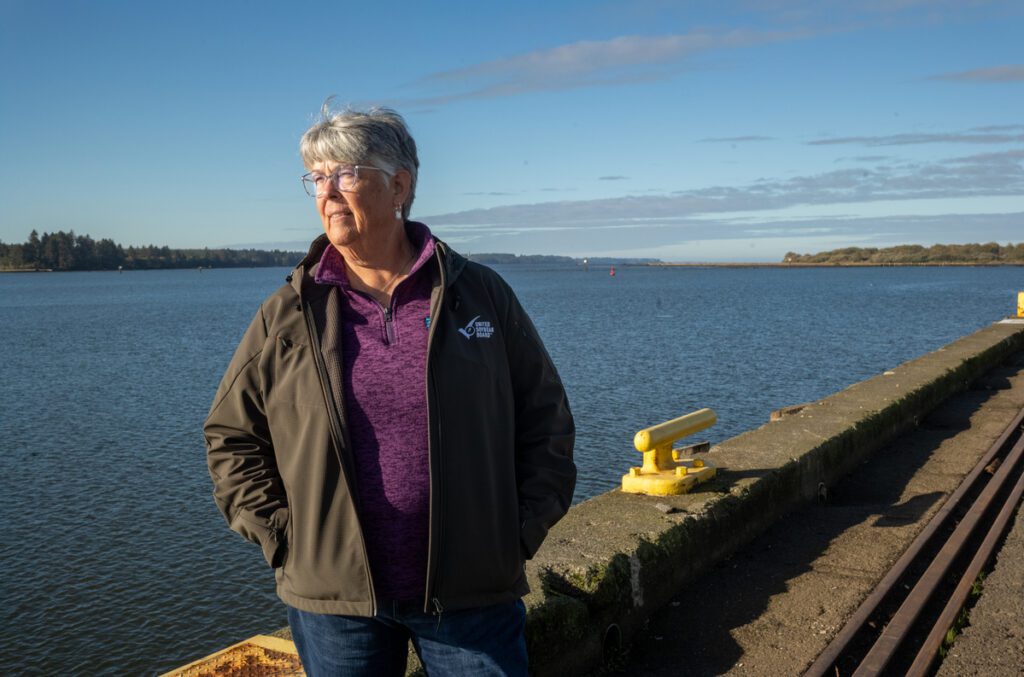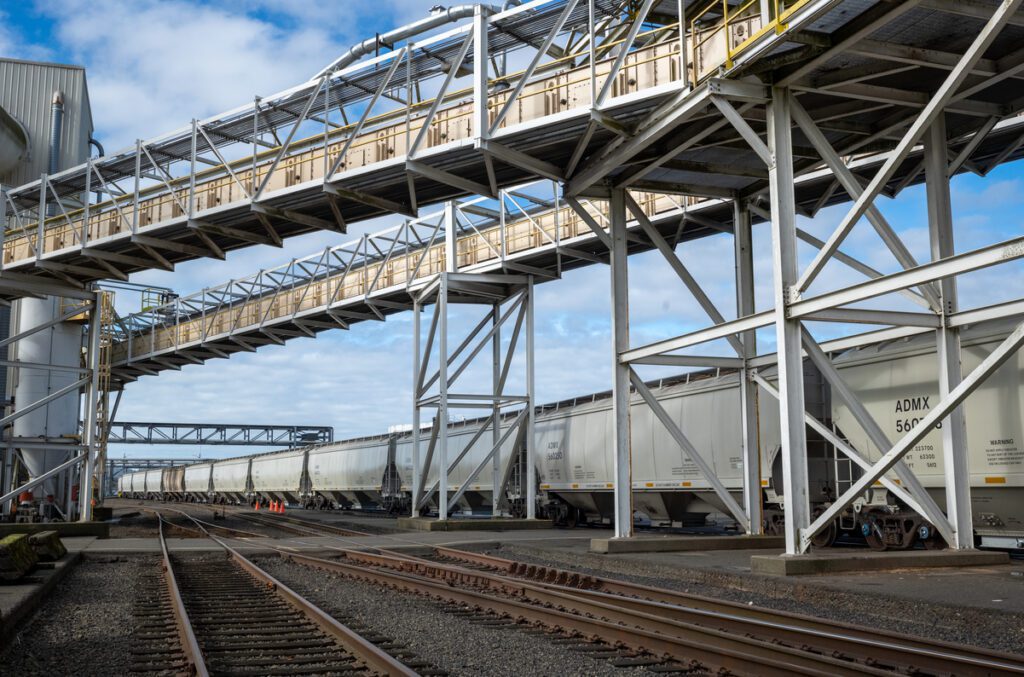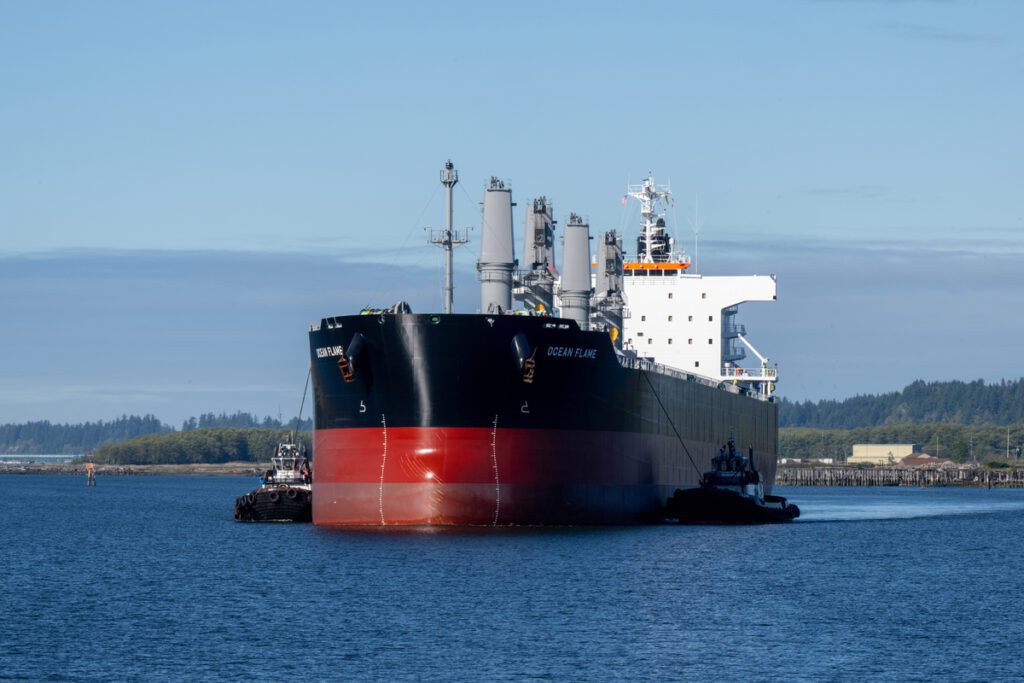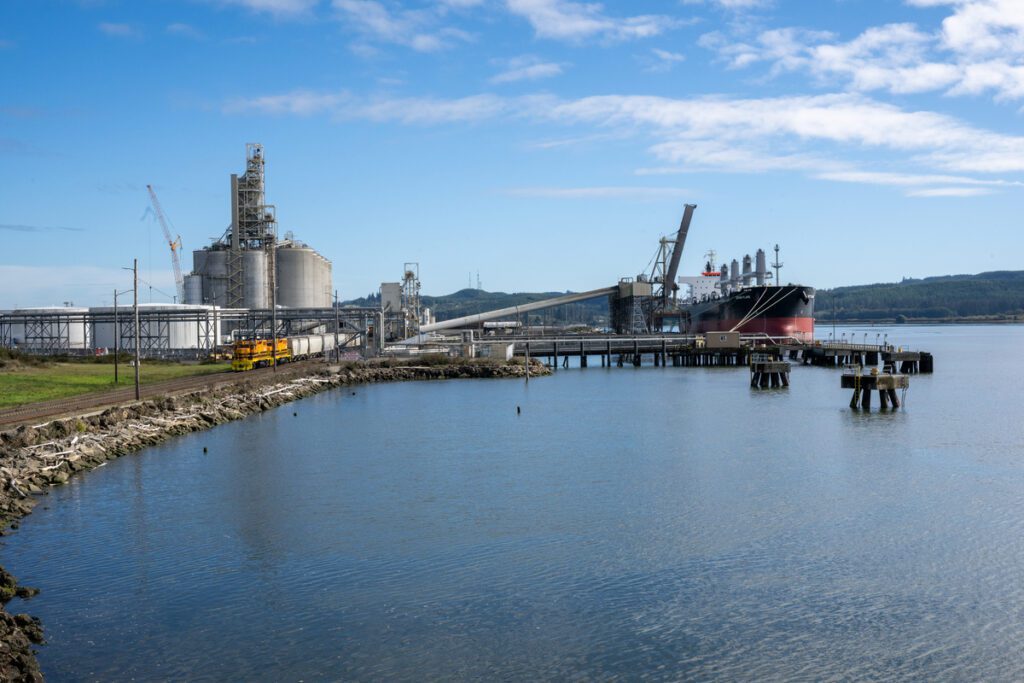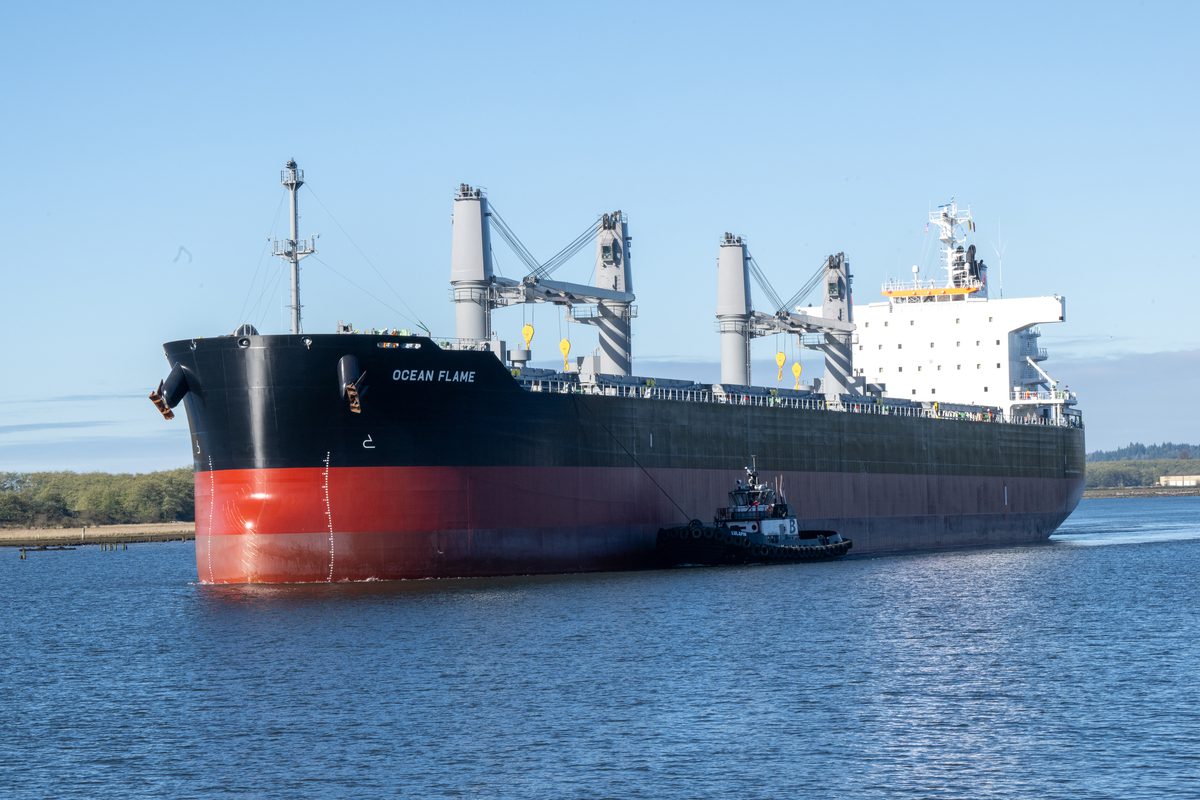The Ground Work series shares the perspectives of U.S. soybean farmers as they observe how the U.S. Soy industry lays the groundwork to grow innovative, reliable and sustainable solutions for people and communities around the world.
When I order something or send a package, I expect both FedEx and UPS to deliver it on time, without damage. Both companies have proven their dependability to me over time. My daughter relies on Amazon, and when I order something from there, she lets me take advantage of her two-day shipping.
As a customer, I value that reliability.
We all learned about the importance of reliable shipping during and after the global pandemic, when “supply chain challenges” allowed grocery store shelves to run empty and caused multi-month delays on orders and shipping.
Like everyone else, I found that incredibly frustrating.
Those experiences shape my expectations as a customer. So when I am on the other side as the supplier, I want to be reliable — not frustrating.
As a farmer, I am a supplier. My husband and I raise soybeans, corn, wheat and hay on our farm near Union Bridge, Maryland, which is roughly 50 miles or 80 kilometers north of Washington, D.C.
I recently traveled from the East Coast to the West Coast of the U.S. to visit a port that is helping soybean farmers like me ship U.S. Soy more reliably to our customers in Asia and beyond. The Port of Grays Harbor near Aberdeen, Washington state, is located just over 130 miles, or 210 kilometers, west of Seattle. It is a deep-water port in the Pacific Northwest that is in the process of expanding to ship more U.S. soybean meal.
The soybeans that farmers like me grow are crushed to separate the oil from other components. The oil can become vegetable oil or be used in many products as a substitute for petroleum-based oils, especially renewable fuels like biodiesel. The rest of the soybean becomes meal that contains protein, which is used in livestock feed and as an ingredient for some soy foods. As the need for renewable fuel grows, more soybeans are being crushed in the U.S. Midwest, which will make more soybean meal.
At the Port of Grays Harbor, I got to see the expansion that accepts trainloads of soybean meal from Minnesota, North and South Dakota and other states. I watched a new cargo ship come into the harbor to be loaded with 45 million metric tons of soybean meal in just a few days for its maiden voyage to Yeosu, South Korea. That ship, and more like it, can take one of the most direct routes from the U.S. to ports in Asia, allowing that soybean meal to better maintain its quality.
This process will make U.S. Soy an even more reliable supplier of high-quality soybean meal, which is a win for farmers like me. We invested in supporting the groundwork for this expansion through U.S. Soy and our soybean checkoff. But, while I was visiting the West Coast, I learned that the whole effort to ship U.S. soybean meal more efficiently is a win for many others.
It’s a win for the people of Grays Harbor County, Washington. The Port of Grays Harbor is a huge employer in a community that is similar to many rural communities throughout the U.S., where industry and opportunity shrink more often than they grow. Exporting more soybean meal from the port will create jobs and bring economic vitality to their area.
It’s a win for people in the countries importing that soybean meal from the U.S. I have visited customers in Asia and the port of Ulsan, South Korea. I have seen the visual difference in the quality of soybean meal from the U.S. compared to that from other origins. As we become a more reliable, affordable supplier of that soybean meal, more people benefit from its products. That soybean meal makes soy food for people and feed for livestock and aquaculture that produces affordable chicken, pork and seafood.
And, the port expansion is a win for sustainable fuel. The investment from exporters demonstrates tangible evidence that more soybean oil will be used in sustainable, renewable diesel fuels for ground, air and ocean transportation.
Watching a new cargo ship dock at the Port of Grays Harbor, ready to be loaded with U.S. soybean meal, gave me a glimpse of all these benefits. U.S. Soy truly connects many different people through its solutions to real challenges.
